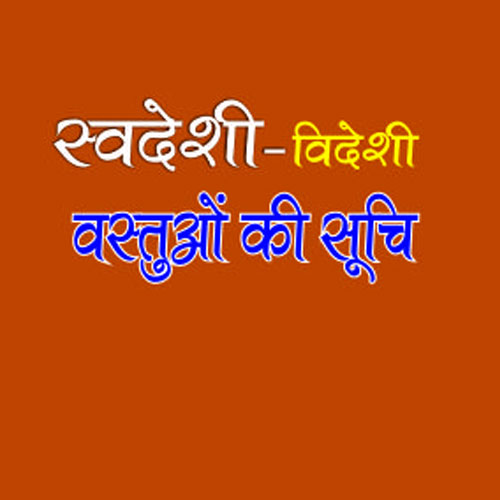
Year of Millets: Festive comeback of the Ancient Superfood
Given the growing interest in millet and its potential as both a food and energy crop, it is projected that the global market for this grain will expand in the years to come. — Dr. Jaya Sharma
The world is celebrating 2023 as the International Year of Millets, almost 5 years after India observed its National Year of Millets in 2018. The proposal for the International Year of Millets 2023, sponsored by the Government of India and led by the Honourable Prime Minister, Shri Narendra Modi was accepted by the United Nations General Assembly. The declaration has let the Government of India to take a leading role in the celebration of International Millet Year 2023.
Festive Kickstart
The festivities and events kickstarted on 6th December 2022 in the opening ceremony by the Food and Agriculture Organization of the United Nations in Rome. Followed by this ceremony, various events and exhibitions have been lined up by various organisations, Ministries and Embassies in India. At the G-20 Summit, millet dishes were served to foreign delegates to promote millets on a global diaspora. This initiative aims to increase production, consumption and global awareness of the health benefits of millets as well as ensuring nutritional security.
What are millets?
Millet is a common name for a group of coarse, small seeded grasses that are grown for their grains. There are several different types of millets, including sorghum (jowar), pearl millet (bajra), finger millet (ragi), foxtail millet (kangni), barnyard millet (sawa), amaranth, buckwheat etc. Each type has its own unique characteristics and can be used in a variety of ways. These grains have traditionally been a part of staple diet of people living in the Asian and African continent. Consumption of millets was very common in Indian sub-continent, until green revolution made its way in Indian kitchens in 1960s. In 1960s the then government prioritised the production of wheat and rice, leading to a decrease in consumption of millets, stating it as a poor man’s food. These refined crops (wheat and rice) lack the critically important nutrients that our bodies need.
India: The Ancient Home for Millets
India is the largest producer of millets world over followed by Africa and China. Within India, the states of Rajasthan, Uttar Pradesh, and Haryana are major producers of these grains. Millets are native to many parts of the world, including Africa, Asia, and South America, and have been a significant part of the diet and agriculture of many civilisations. The mention of millets in the ancient Indian scripture, Yajurved suggests that the consumption of millets was prevalent since ancient times. Millets have been cultivated for food in Africa for over 5000 years and have traditionally been a major staple crop in various regions of the continent.
An Eco-Friendly option
Millets are not only nutritious, but also a sustainable grain with numerous environmental benefits, which makes them attractive to farmers. Millets are a low-maintenance crop (do not require much fertiliser or pesticides) that can thrive in areas with poor soil conditions or low rainfall and water availability. Millets are also highly resistant to pests and diseases; this reduces the need for pest control measures and increases the chances of a successful harvest. They also have a shorter growing season than some other crops, which can be beneficial for farmers in areas with limited growing seasons. Millets have deep root systems that help to improve soil health by increasing organic matter and reducing erosion. The cultivation of millets has been shown to prevent salinization, as opposed to other crops such as rice which require a high amount of water for growing and can contribute to the accumulation of salt in the soil, which negatively impacts soil health. Additionally, millets have a high yield potential and can be grown on a variety of soil types, making them a versatile option for farmers.
Millet Type Serving size* (g) Calories (kcal) Protein (g) Fat (g) Carbohydrates (g) Fibre (g)
Pearl millet 64 172 4.6 1.4 35.4 3.4
Finger millet 64 371 7.5 1.3 78.5 5.3
Foxtail millet 64 371 7.5 1.3 78.5 5.3
Kodo millet 64 371 7.5 1.3 78.5 5.3
Proso millet 64 371 7.5 1.3 78.5 5.3
Little millet 64 371 7.5 1.3 78.5 5.3
Barnyard millet 64 371 7.5 1.3 78.5 5.3
*Serving size is for cooked millet. Source: USDA National Nutrient Database for Standard Reference
Treasure Trove for Health Benefits
The high and growing disease burden of masses can well be overcome by integrating millets into our diet. They are high in protein, dietary fibre, a variety of vitamins and minerals, and are a good source of antioxidants. They also have a low glycemic index, which makes them suitable for people with diabetes or those looking to manage their blood sugar levels. Millets are naturally gluten-free and non-allergic which makes them a perfect alternative for people with celiac disease or gluten intolerance. Many food items today are contaminated with adulterants or harmful chemicals, in contrast, millets are purely organic due to the minimal use of pesticides and chemical fertilizers.
Nutritional Value of Millets
Including millets in diet can be a healthy and sustainable way to add variety and nutrition to meals, owing to their low carbon footprint compared to other grains. Apart from these, millets are also used as fodder for livestock and as a source of fuel. Therefore, growing millets could potentially lead to increased exports and economic growth.
Taanana Teras: Traditional Millet Day
The lineages of our society demonstrated a high degree of consideration in their selection of practices. Their lifestyle was characterized by both healthfulness and sustainability. Prior to incorporating any particular practice into their daily lives, they thoroughly evaluated its potential benefits and drawbacks. As a result of this conscientious examination, millets became an integral component of their diet. This tradition of incorporating millets into the diet has been passed down and is still widely practiced among the people of Rajasthan. Every year in pursuit of Pauranic tradition, when Wednesday coincided with Shukla Paksh (fortnight of the waxing moon) and Trayodashi tithi (thirteenth lunar day of Hindu calendar), ‘Taanana teras’ is celebrated. It can be also said to be the Pauranic Biodiversity Day. On this day different types of millets are prepared in a variety of dishes such as porridge, khichdi, chapati, desserts, fritters, etc. In addition to millets, the consumption of seasonal vegetables is also emphasized on this day. It is a tradition to prepare a dry curry featuring 13 different seasonal vegetables along with multigrain bread made of 13 different grains. This tradition not only generated revenue for farmers, but also provided a nutritionally balanced diet for the individuals who celebrated.
Conclusion
Millets have been identified as a potential solution to a range of issues including agricultural distress, climate extremes, and nutritional inadequacies stemming from the consumption of a single crop. Their ability to thrive in difficult growing conditions and their diverse range of nutrients make them a promising option for addressing these challenges. As the awareness of the health benefits associated with millet continues to grow, it is anticipated that demand for this grain crop will increase in the near future. For small-scale farmers in developing countries, millet represents a vital crop that provides not only a source of food, but also a means of income generation.
By pursuing research and development, it is possible to enhance the yield and quality of millets, leading to increased production and a wider adoption of this crop. Additionally, millet also has the potential to serve as a feedstock for biofuels, offering an alternative source of energy and reducing reliance on fossil fuels. Given the growing interest in millet and its potential as both a food and energy crop, it is projected that the global market for this grain will expand in the years to come.


